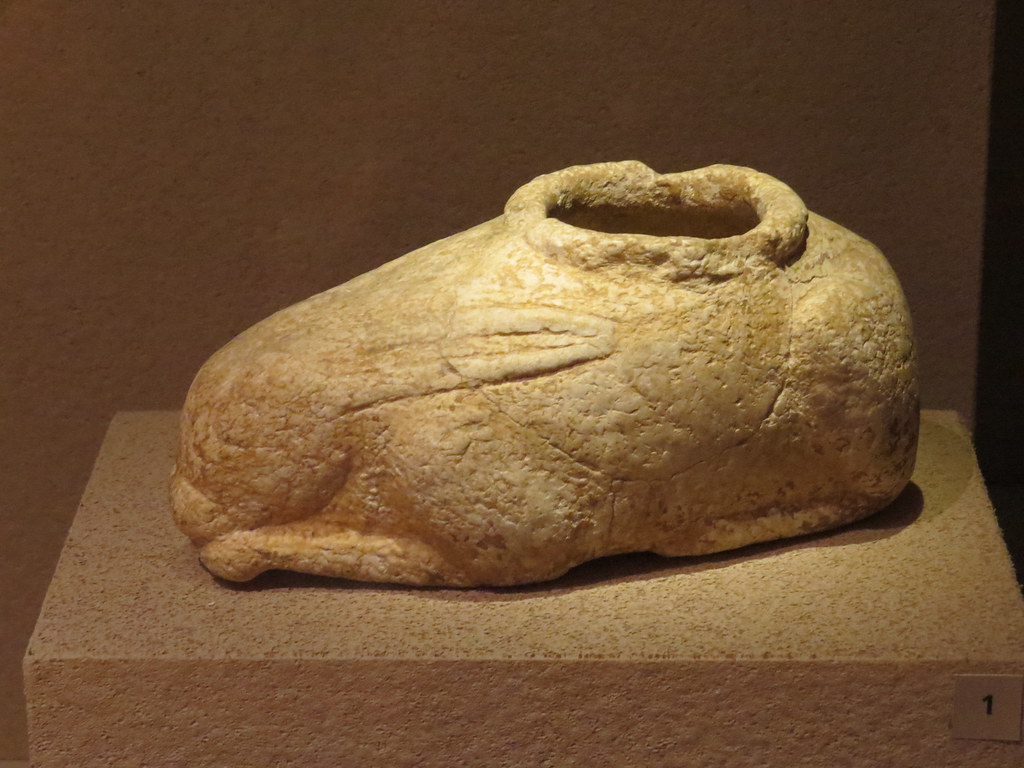The Hare Vessel, a striking artifact that dates back at least 8,000 years, offers a rare window into the artistic and cultural practices of the Neolithic period. Found in the Levantine region, specifically Syria, this beautifully carved gypsum vessel measures 18.41 cm (7 1/4 inches) in length and stands as a testament to the advanced craftsmanship of early human societies. Its design is not only a reflection of the aesthetic preferences of its creators but also highlights the symbolic and functional aspects that permeated the lives of Neolithic peoples.

Craftsmanship and Symbolism
The artistry of the hare-shaped vessel reveals the early human ability to blend utility with symbolism. The vessel’s form, a highly stylized representation of a hare, is indicative of the rich spiritual and symbolic world in which it was created. In many ancient cultures, the hare was associated with fertility, abundance, and renewal. This suggests that the vessel may have had a dual purpose—both as a functional object and as a spiritual or ritual item. The combination of a naturalistic design with symbolic undertones is characteristic of the Neolithic period, where art and daily life were closely intertwined.
The Significance of the Hare in Ancient Cultures
The choice of a hare for this vessel is particularly significant. Hares were commonly associated with fertility, growth, and the cycles of life, making them powerful symbols in Neolithic societies. The vessel could have been used in rituals related to these themes, serving as both a practical item and a tool for spiritual or communal ceremonies. This reflects the broader trend in early human societies where everyday objects were imbued with meaning beyond their immediate use.

Preservation and Discovery
The vessel was acquired by the Museum of Fine Arts in Boston, Massachusetts, in 1995, thanks to the Egyptian Curator’s Fund with a partial gift from Emmanuel Tiliakos. Its preservation is a remarkable achievement, allowing modern scholars to study and interpret the Neolithic world through the lens of this artifact. The hare vessel offers a rare glimpse into the daily life and spiritual practices of ancient Levantine cultures, showcasing the early integration of artistic expression into functional objects.
A Link to the Past
What makes the hare-shaped vessel even more fascinating is the insight it provides into Neolithic societies’ cultural and artistic sophistication. The fact that such an object has survived for over 8,000 years speaks to the durability of both the materials and the artistic traditions of the time. Today, it stands not only as an example of Neolithic craftsmanship but also as a tangible connection to a world long past. The vessel’s preservation continues to inform scholars about the religious and cultural practices of early humans, offering a deeper understanding of how art, life, and spirituality were intertwined in ancient times.
Conclusion
The enigmatic hare vessel remains one of the finest examples of Neolithic artistry, offering valuable insights into the spiritual and daily life of ancient societies. Its exquisite craftsmanship, symbolic design, and historical significance make it a vital artifact in understanding the role of art in early human culture. As part of the Museum of Fine Arts’ extensive collection, it continues to captivate visitors, sparking curiosity and wonder about the ancient world.
